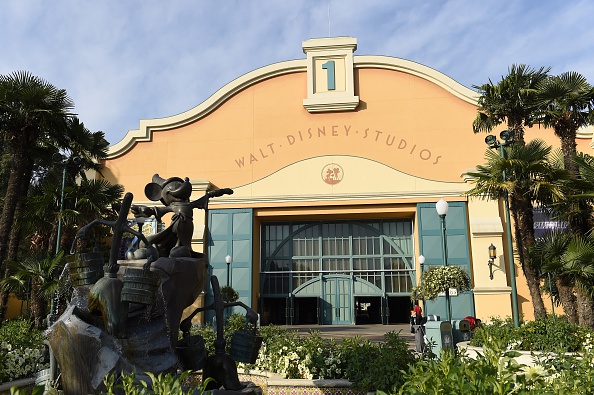At a board retreat in Orlando, Florida, in 2006, a pair of senior Disney executives predicted a seismic shift in the media landscape — one fueled by consumers who would enjoy unprecedented access to content. Their plan? Amass strong enough entertainment brands and franchises to grab the attention of viewers awash in choices.
That insight, part of a “Disney 2015” presentation by its CFO at the time, Tom Staggs, and corporate strategist Kevin Mayer, was delivered a dozen years before Netflix briefly surpassed Disney as the world’s most valuable media company in 2018. It would inform an aggressive buying binge, in the mold of the Pixar Animation Studios deal of 2006, that would roll up some of the world’s most recognizable entertainment brands under the Disney banner — Marvel Entertainment, Lucasfilm and 21st Century Fox. These form the foundation of the coming Disney+ streaming service, which CEO Bob Iger will discuss in detail at an investor day Thursday on Disney’s manicured studio lot in Burbank, California.
Analysts say Disney’s library of blockbuster films and popular TV shows, bolstered by its recent acquisition of Fox’s film and television assets, give it a competitive advantage that should help attract subscribers — even at a time when established rivals, like Netflix and Amazon Prime Video, have gained a substantial head-start.
Disney and Fox together account for 47% of the top 100 films of all time, based on domestic box office. That’s more than double the nearest competitor, Warner Bros., with 20 hit movies. The combined Disney and Fox libraries also command the largest share of the 100 most popular TV shows, as ranked by IMDB.
Disney plans to mine its Pixar, Marvel and Star Wars franchises for original shows that will appear exclusively on the streaming service, including a live-action Star Wars TV series The Mandalorian, an animated series Monsters At Work, with Billy Crystal and John Goodman reprising their roles as Mike and Sully, and a series based on the Marvel archer character Hawkeye, starring Jeremy Renner.
Loading...
“The amalgamation of Disney’s and Fox’s libraries will create an unparalleled combination of great, hard to recreate and memorable content,” said media analyst Michael Nathanson.
Nathanson predicts Disney+ will attract 7.1 million subscribers in its first year, growing to nearly 24 million by the end of fiscal 2022.
A question remains about whether a content company like Disney will be able to match Netflix’s technological prowess. The Los Gatos-based streaming service has been able to draw from its vast trove of user data to deliver recommendations that keep its 139 million global subscribers watching, month after month, and inform programming decisions.
Disney has stumbled on previous digital endeavors, such as DisneyLife, a U.K.-based streaming service that launched in 2015, charging £10 a month for access to some 400 movies, 4,000 TV episodes as well as songs and books. Despite a price drop, it has failed to catch on with subscribers, according to numerous published accounts.
The success of Disney+ is something Iger is staking his legacy on, describing it, during a recent investor call, as “our number one priority.”
That’s a major strategic shift for Disney, which had enabled the growth of Netflix through lucrative multi-year deals, such as the one in 2012 that gave the streaming service exclusive TV rights to new and catalog films, and another, the following year, that handed Netflix access to Marvel’s muscular superhero roster — with ABC Television Studio developing original series based on comic book characters Daredevil, Jessica Jones and Luke Cage.
Netflix became the de facto syndicator for a number of TV shows, noted Nathanson.
The inescapable toll of cord-cutting, fanned by popular services like Netflix, caused a re-calibration inside the Mouse House. Disney’s traditional cash cow, ESPN, has shed 13 million domestic subscribers from its peak in 20013, and Disney Channel also has lost millions of pay TV viewers.
Iger shifted course in 2017, announcing that Disney would pull its content from Netflix and launch its own service in 2019. That August, the company invested $1.58 billion to acquire a majority ownership of BAMTech, the MLB-founded video streaming technology that will power Disney+. That same year, in December, Disney announced its ground-breaking deal to acquire much of Fox, a move that would position Disney as the world’s preeminent entertainment company — and bulk up its library as it prepares to do battle with Netflix.
The $71.3 billion Fox deal, which closed in March, reunited the X-Men and Fantastic Four with the rest of the Marvel universe, added The Simpsons and Ice Age to Disney and Pixar’s animated roster, and brought James Cameron’s four sequels to the box-office blockbuster Avatar under the Disney banner. It also gave Disney a controlling interest in Hulu, a streaming service jointly owned with Comcast’s NBCUniversal and AT&T’s WarnerMedia, which has amassed 25 million subscribers.
Disney announced a sweeping corporate reorganization in March of 2018, to consolidate its streaming operations under the executive who’d overseen its major acquisitions, Kevin Mayer. Previously, efforts had been fragmented among the different business units, with the film and television groups pursuing different digital strategies, say former insiders.
“Depending on how aggressively Disney intends to invest, and their willingness to accept compressed profit margins, the company has a chance to become a meaningful competitor to Netflix and Amazon’s Prime Video,” wrote Brian Wieser, a long-time media analyst who now oversees business intelligence for GroupM, one of the world’s largest media buyers.
-Dawn Chmielewski; Forbes Staff
Loading...
